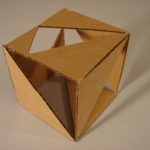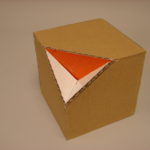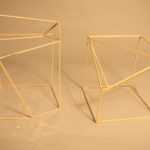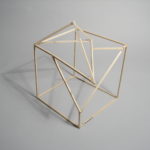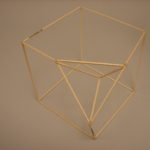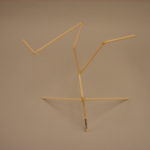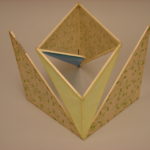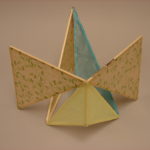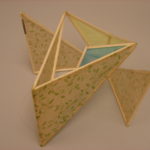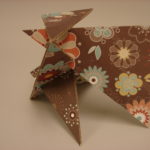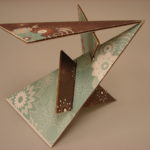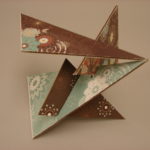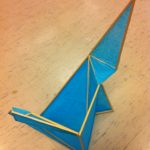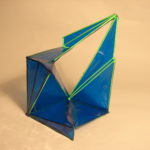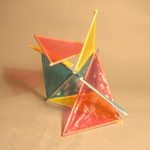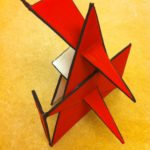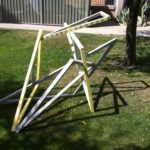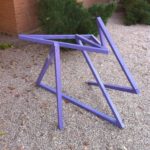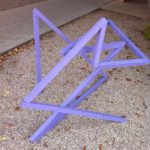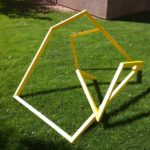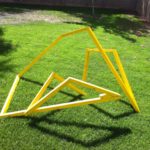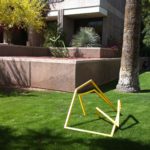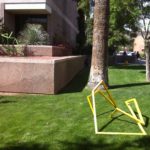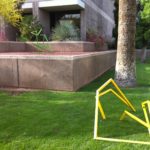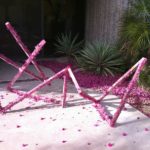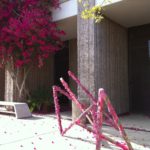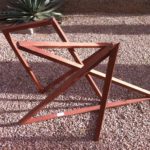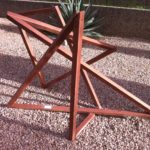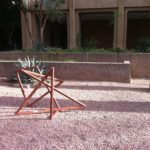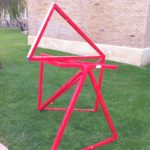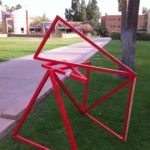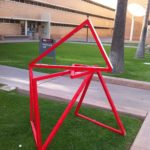UNIT IIIA: Points, Lines, Planes, and Volumes
OBJECTIVE: Introduction of three-dimensional space conceived as a vocabulary of points, lines, and planes defining actual and implied elements.
PROJECT: We came in millions, we came in droves – 3D Elements of a broken cube
PROCESS:
- Make a 6” cube out of chipboard.
- Slice a section of it off, and re-attach the section in a new orientation.
- Orient your object and create an axonometric drawing of your cut cube from this view.
- Using tracing paper, make a template of just the points (corners).
- Using your template, make at least ten layouts of just the points on paper.
- Connect the points with straight lines in different combinations to create new compositions.
- Using your new drawings recreate three of them in 3D using lines, then planes, and finally volumes, changing materials with each iteration.
READING: Launching the Imagination Chapters 1, 10
VOCABULARY: point, line, plane, volume, dynamic, implied, non-objective, full round, closure, composition, grid, focal point, matrix, proximity, repetition, unity, symmetry, balance, scale
REFERENCES: Tensegrity, The Power of Limits, Richard Serra, Sol Lewitt, James Turrell, Ann Hamilton, Robert Pearless
MATERIALS: Rulers, linear elements (bass wood), planar elements (chipboard), glue, hot glue, paper, tracing paper, right triangles, pencils

